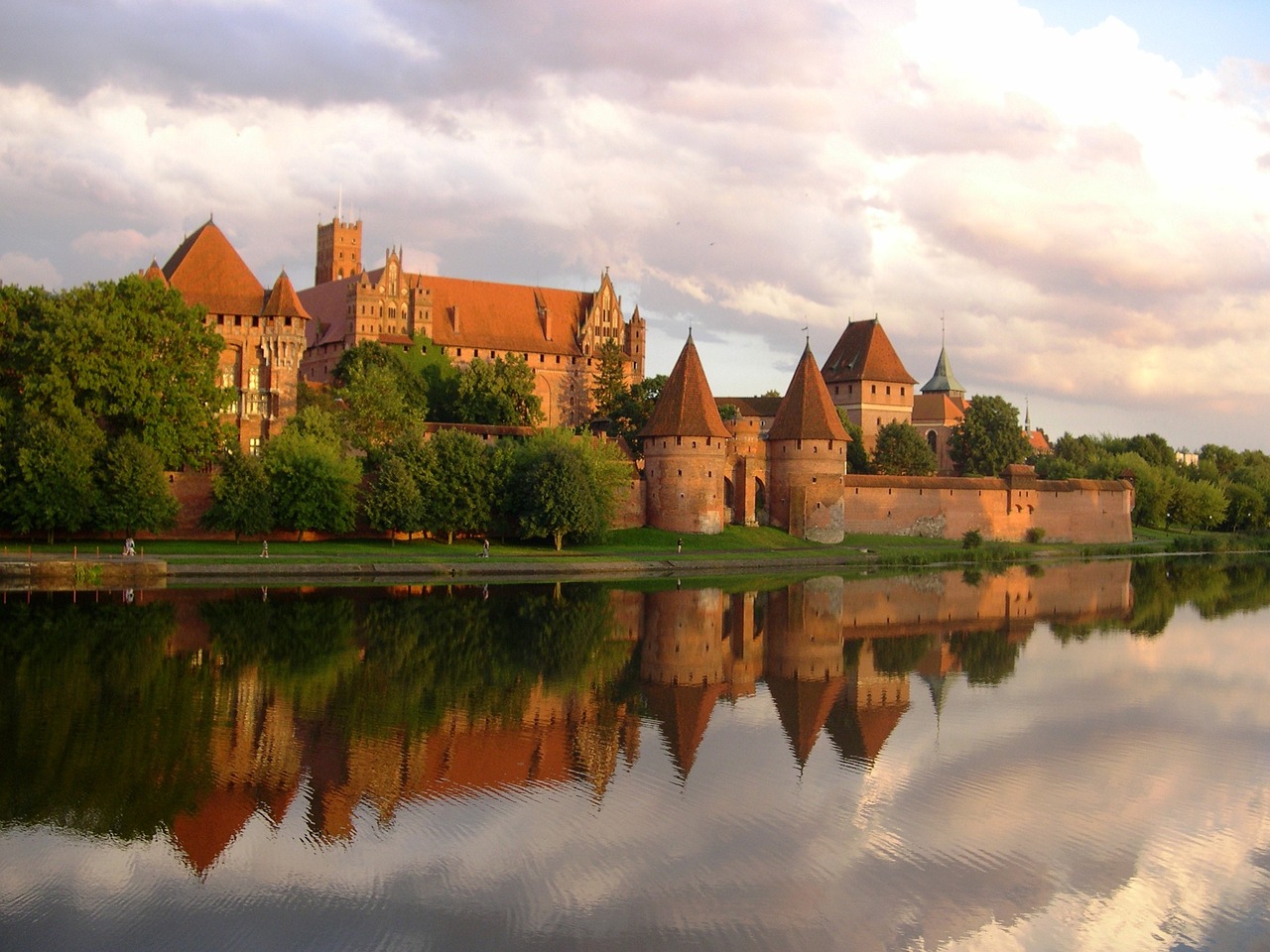
Malbork Castle from across the Nogat (Image: Pixabay)
Perched majestically on the banks of the Nogat River in northern Poland, the Castle of the Teutonic Order in Malbork stands as a formidable testament to the rich history and culture of the Polish people. This grand fortress, often referred to as Malbork Castle, a building of exceptional aesthetics reflects some of the most interesting parts of Polish history.
A Fortress Forged in Faith and Conflict
Constructed by the Teutonic Knights in the 13th century, Malbork Castle was initially established as a stronghold during the Northern Crusades. The Teutonic Order, a medieval German military order with a religious foundation, sought to convert the indigenous Prussian population to Christianity. Over the centuries, the castle evolved from a military bastion to a symbol of the Teutonic Knights’ power and control in the region.
The castle’s imposing Gothic architecture, characterized by its red brick walls and intricate detailing, speaks to the medieval craftsmanship that went into its construction. As one explores the vast complex of Malbork Castle, it becomes evident that this fortress not only guarded the borders of the Teutonic State but also bore witness to the dynamic history of the land that would become modern-day Poland.
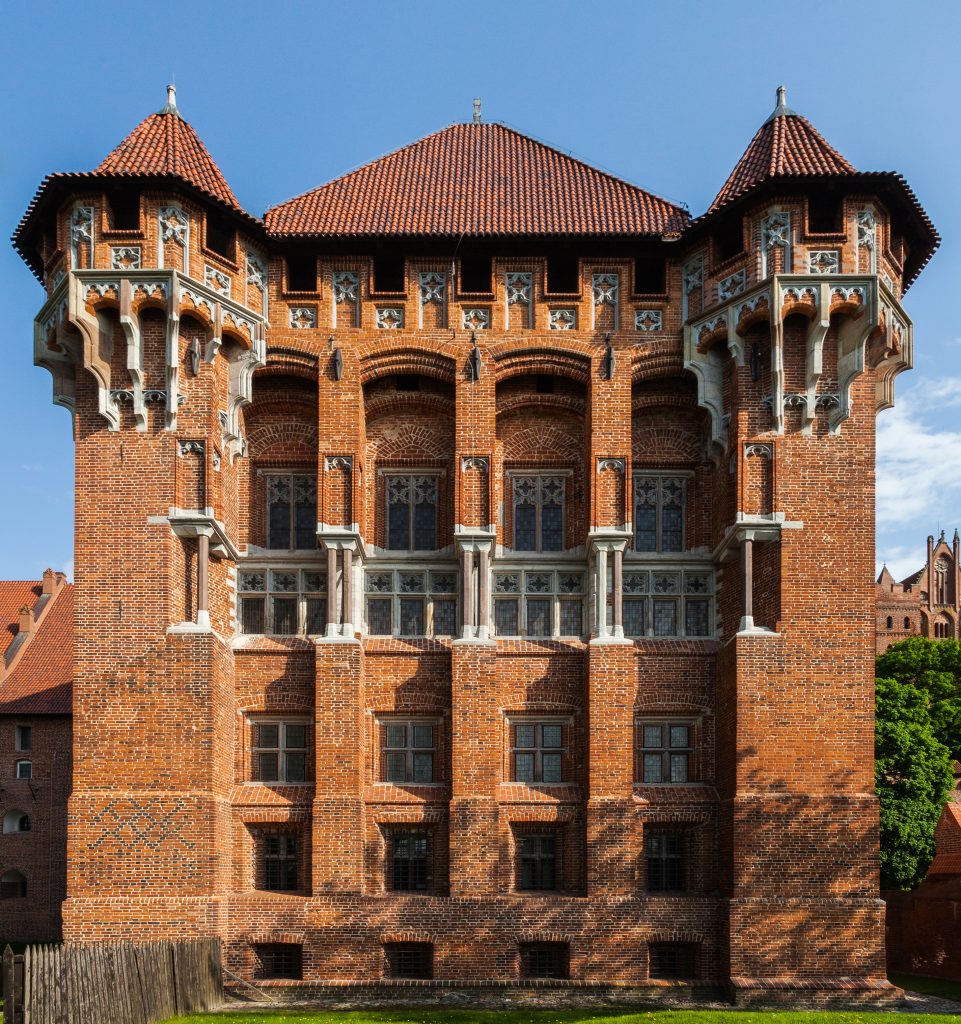
Malbork Castle, with its commanding presence along the banks of the Nogat River, is a masterful testament to the aesthetic splendor of Gothic architecture. As one approaches the castle, the eye is immediately drawn to the imposing red brick walls that seem to rise from the very earth, creating a harmonious union between the fortress and its natural surroundings. The aesthetic appeal of Malbork Castle extends beyond its functional design, encapsulating a visual narrative that speaks to the cultural and artistic sensibilities of its creators.
Gothic Majesty in Brick and Stone
The defining feature of Malbork Castle‘s aesthetics lies in its extensive use of brickwork—a hallmark of Gothic architecture. The red bricks, meticulously arranged in intricate patterns, give the castle a warm and imposing character. The choice of brick not only served practical purposes, ensuring durability and strength but also contributed to the castle’s visual allure. The play of light and shadow on the textured surface of the bricks adds depth and dimension, creating a visual symphony that changes with the shifting sunlight.
Architectural Harmony: Towers and Turrets
The silhouette of Malbork Castle is dominated by an array of towers and turrets that punctuate the skyline. Each tower is a unique expression of Gothic design, featuring pointed spires, soaring arches, and decorative elements that evoke a sense of verticality and elegance. The towers not only served defensive purposes but also played a crucial role in the castle’s overall aesthetic balance. The asymmetry of the towers creates a dynamic visual rhythm, drawing the eye upward and imbuing the fortress with a sense of majestic grandeur.
Intricate Details: Carvings and Decorative Elements
Upon closer inspection, the intricate details of Malbork Castle‘s aesthetics come to life. Elaborate carvings adorn doorways, windows, and facades, showcasing the craftsmanship of medieval artisans. Delicate tracery, floral motifs, and religious symbols are woven into the fabric of the castle, adding a layer of sophistication to its rugged exterior. These decorative elements not only serve as aesthetic embellishments but also provide insights into the cultural and religious influences that shaped the castle’s design.
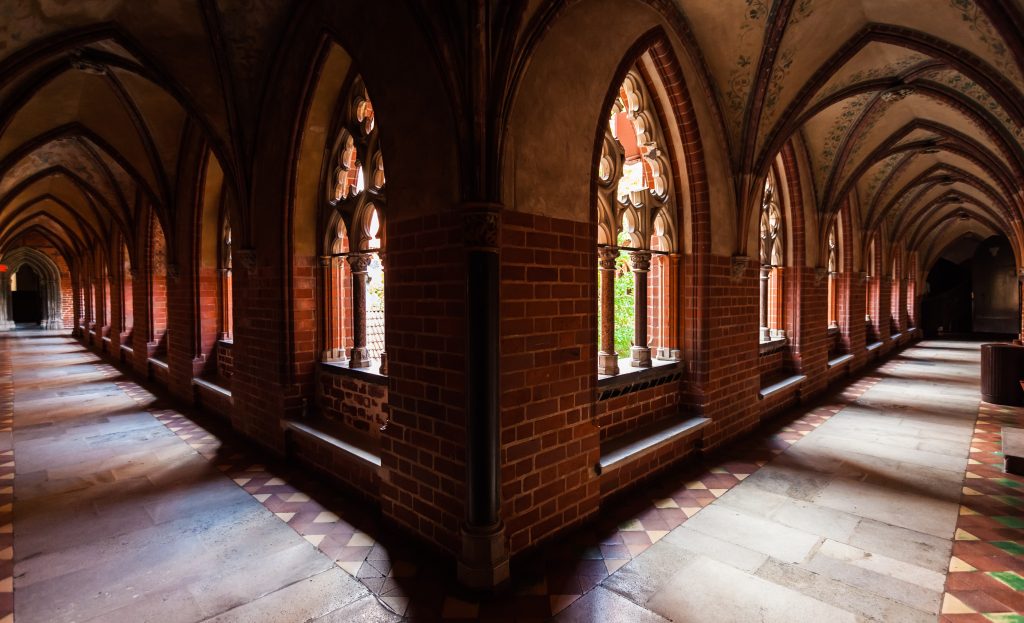
Courtyards and Gardens: Nature in Harmony
Malbork Castle‘s aesthetic extends beyond its walls to encompass the carefully planned courtyards and gardens within. The interplay between architecture and nature creates a harmonious balance, as manicured greenery softens the fortress’s formidable exterior. The courtyards, with their well-tended lawns and vibrant flowers, invite visitors to pause and appreciate the serenity within the castle walls. This integration of nature into the architectural design adds a layer of tranquility to the overall aesthetic experience.
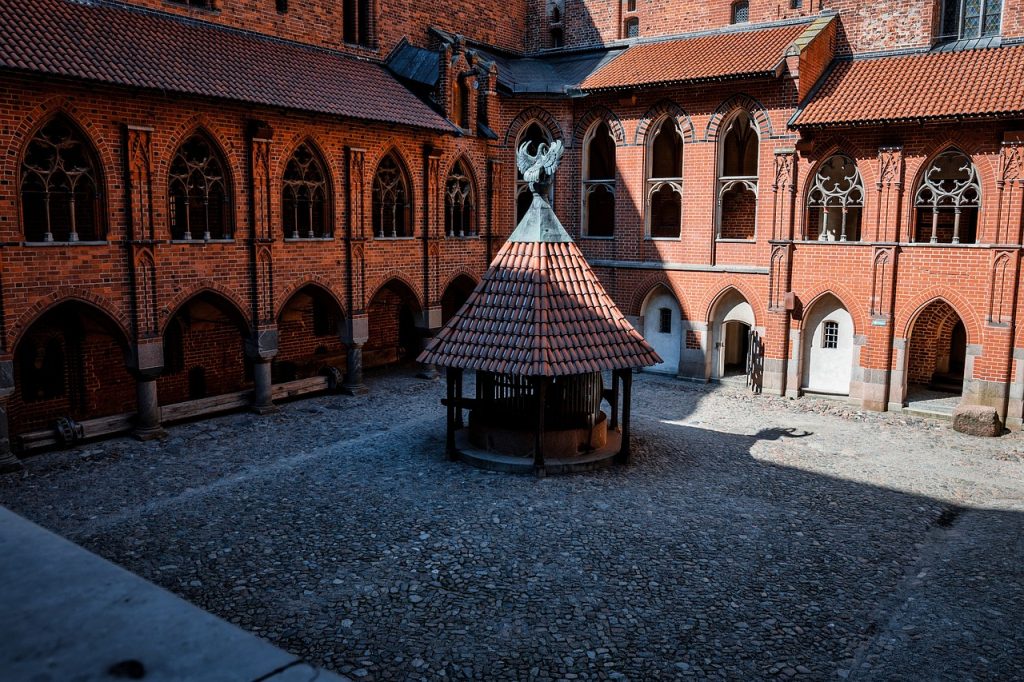
Renaissance Rebirth: Malbork as a Royal Residence
Following the Peace of Thorn in 1466, which ended the Thirteen Years’ War between the Teutonic Order and Poland, Malbork Castle was ceded to the Polish Crown. Under King Casimir IV, the castle transformed, becoming a royal residence and a testament to the resilience and adaptability of Polish culture.
During the Renaissance, Malbork Castle witnessed a period of cultural and artistic flourishing. The interiors were adorned with intricate tapestries, paintings, and decorative elements that reflected the sophisticated tastes of the Polish monarchy. The castle became a hub of intellectual and artistic activity, hosting royal courtiers, diplomats, and scholars who contributed to the cultural tapestry of the Polish Renaissance.
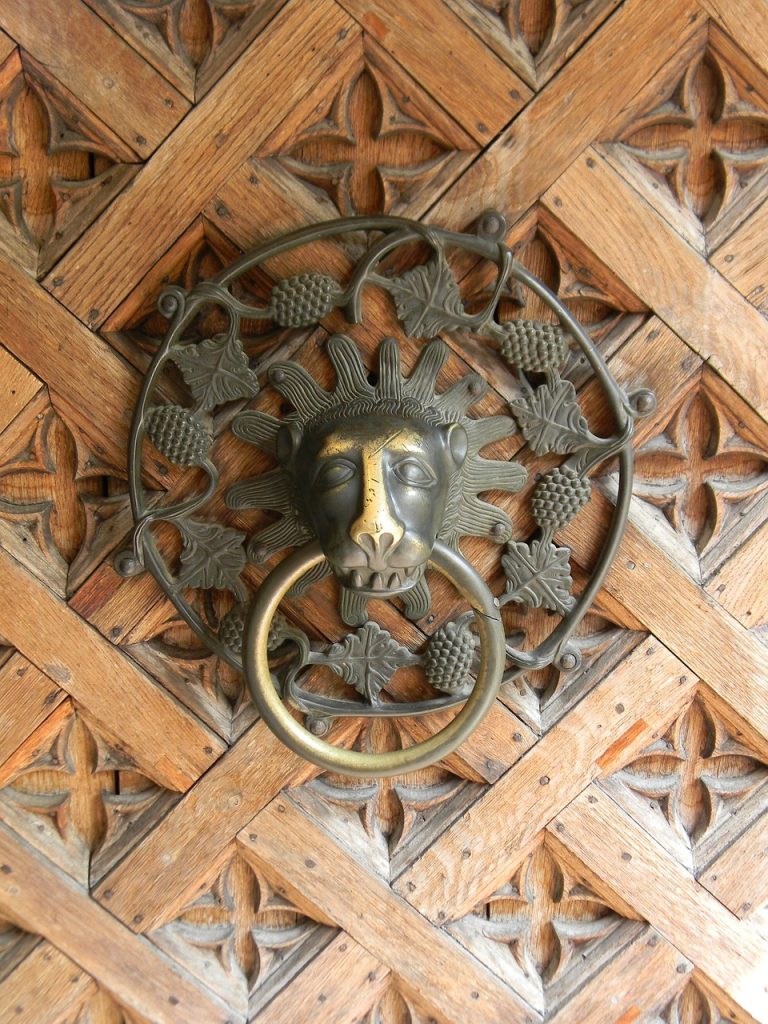
Malbork Today: A Cultural Gem and Symbol of Unity
In the modern era, Malbork Castle has been meticulously preserved and restored, standing as a UNESCO World Heritage Site and a symbol of Poland’s cultural heritage. The castle complex includes the High Castle, Middle Castle, and Low Castle, each offering a glimpse into different chapters of Polish history.
The castle’s museum houses a remarkable collection of artifacts, including weaponry, religious objects, and artwork, providing visitors with a comprehensive understanding of the castle’s multifaceted history. The stunning Gothic architecture and the meticulous restoration work serve as a testament to the enduring spirit of the Polish people, who have embraced and preserved their cultural heritage in the face of historical challenges.
Malbork Castle, with its imposing walls and storied history, encapsulates the essence of Polish history and culture. From its origins as a Teutonic stronghold to its transformation into a royal residence, the castle has been a silent witness to the ebb and flow of Poland’s fortunes. Today, as visitors wander through its halls and courtyards, they are immersed in a living chronicle that tells the story of a nation’s journey through time—a journey marked by faith, conflict, rebirth, and cultural vibrancy. Malbork Castle stands as an enduring testament to the resilience and enduring spirit of the Polish people, a legacy that continues to shape the cultural landscape of this dynamic European nation.

One thought on “Poland’s Gothic Masterpiece: Malbork Castle’s Enchanting Echoes of Tumultuous Past”